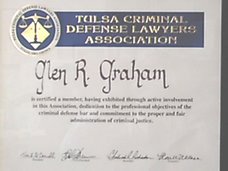The Reid Technique of Police Interrogation
A new report on How Stuff Works detailing How Police Interrogation Works (the Reid Technique of Police Interrogation) is rather good and details this most widely used technique. Estimates are as high as 80% of suspects in the U.S. confess to crimes.
For a while, police tried such things as polygraphs to determine if the suspect was being deceptive, but polygraphs and polygraph training are expensive, and the results are almost never admissible in court. But some polygraph analysts, including a man named John Reid, began noticing that subjects exhibited certain outward, consistent physical signs that coincided with the polygraph's determination of untruthfulness. Reid went on to develop a non-machine-based system of interrogation based on specific types of questions and answers that uncover weaknesses the interrogator can use against a suspect to obtain a confession. Reid's "Nine Steps" of psychological manipulation is one of the most popular interrogation systems in the United States today.
Before the nine steps of the Reid interrogation begin, there's an initial interview to determine guilt or innocence. During this time, the interrogator attempts to develop a rapport with the suspect, using casual conversation to create a non-threatening atmosphere. People tend to like and trust people who are like them, so the detective may claim to share some of the suspect's interests or beliefs. If the suspect starts talking to the interrogator about harmless things, it becomes harder to stop talking (or start lying) later when the discussion turns to the crime.
During this initial conversation, the detective observes the suspect's reactions -- both verbal and non-verbal -- to establish a baseline reaction before the real stress begins. The detective will use this baseline later as a comparison point.
One method of creating a baseline involves asking questions that cause the suspect to access different parts of his brain. The detective asks non-threatening questions that require memory (simple recall) and questions that require thinking (creativity). When the suspect is remembering something, his eyes will often move to the right. This is just an outward manifestation of his brain activating the memory center. When he's thinking about something, his eyes might move upward or to the left, reflecting activation of the cognitive center. The detective makes a mental note of the suspect's eye activity.
The next step is to turn the questioning to the task at hand. The detective will ask basic questions about the crime and compare the suspect's reactions to the baseline to determine if the suspect is being truthful or deceptive. If the interrogator asks the suspect where he was the night of the crime and he answers truthfully, he'll be remembering, so his eyes may move to the right; if he's making up an alibi, he's thinking, so his eyes might move to the left. If the interrogator determines that the suspect's reactions indicate deception, and all other evidence points to guilt, the interrogation of a guilty suspect begins.
The Reid technique is the basis of the widely used "Criminal Interrogation and Confessions" manual. It lays out nine steps or issues guiding interrogation. Many of these steps overlap, and there is no such thing as a "typical" interrogation; but the Reid technique provides a blueprint of how a successful interrogation might unfold.
ConfrontationThe detective presents the facts of the case and informs the suspect of the evidence against him. This evidence might be real, or it might be made up. The detective typically states in a confident manner that the suspect is involved in the crime. The suspect's stress level starts increasing, and the interrogator may move around the room and invade the suspect's personal space to increase the discomfort.
Theme developmentThe interrogator creates a story about why the suspect committed the crime. Theme development is about looking through the eyes of the suspect to figure out why he did it, why he'd like to think he did it and what type of excuse might make him admit he did it. Does the suspect use any particular mode of reasoning more often than others? For example, does he seem willing to blame the victim? The detective lays out a theme, a story, that the suspect can latch on to in order to either excuse or justify his part in the crime, and the detective then observes the suspect to see if he likes the theme. Is he paying closer attention than before? Nodding his head? If so, the detective will continue to develop that theme; if not, he'll pick a new theme and start over. Theme development is in the background throughout the interrogation. When developing themes, the interrogator speaks in a soft, soothing voice to appear non-threatening and to lull the suspect into a false sense of security.
Stopping denialsLetting the suspect deny his guilt will increase his confidence, so the detective tries to interrupt all denials, sometimes telling the suspect it'll be his turn to talk in a moment, but right now, he needs to listen. From the start of the interrogation, the detective watches for denials and stops the suspect before he can voice them. In addition to keeping the suspect's confidence low, stopping denials also helps quiet the suspect so he doesn't have a chance to ask for a lawyer. If there are no denials during theme development, the detective takes this as a positive indicator of guilt. If initial attempts at denial slow down or stop during theme development, the interrogator knows he has found a good theme and that the suspect is getting closer to confessing.
Overcoming objectionsOnce the interrogator has fully developed a theme that the suspect can relate to, the suspect may offer logic-based objections as opposed to simple denials, like "I could never rape somebody -- my sister was raped and I saw how much pain it caused. I would never do that to someone." The detective handles these differently than he does denials, because these objections can give him information to turn around and use against the suspect. The interrogator might say something like, "See, that's good, you're telling me you would never plan this, that it was out of your control. You care about women like your sister -- it was just a one-time mistake, not a recurring thing." If the detective does his job right, an objection ends up looking more like an admission of guilt.
Getting the suspect's attentionAt this point, the suspect should be frustrated and unsure of himself. He may be looking for someone to help him escape the situation. The interrogator tries to capitalize on that insecurity by pretending to be the suspect's ally. He'll try to appear even more sincere in his continued theme development, and he may get physically closer to the suspect to make it harder for the suspect to detach from the situation. The interrogator may offer physical gestures of camaraderie and concern, such as touching the suspect's shoulder or patting his back.
The suspect loses resolveIf the suspect's body language indicates surrender -- his head in his hands, his elbows on his knees, his shoulders hunched -- the interrogator seizes the opportunity to start leading the suspect into confession. He'll start transitioning from theme development to motive alternatives (see the next step) that force the suspect to choose a reason why he committed the crime. At this stage, the interrogator makes every effort to establish eye contact with the suspect to increase the suspect's stress level and desire to escape. If, at this point, the suspect cries, the detective takes this as a positive indicator of guilt.
AlternativesThe interrogator offers two contrasting motives for some aspect of the crime, sometimes beginning with a minor aspect so it's less threatening to the suspect. One alternative is socially acceptable ("It was a crime of passion"), and the other is morally repugnant ("You killed her for the money"). The detective builds up the contrast between the two alternatives until the suspect gives an indicator of choosing one, like a nod of the head or increased signs of surrender. Then, the detective speeds things up.
Bringing the suspect into the conversationOnce the suspect chooses an alternative, the confession has begun. The interrogator encourages the suspect to talk about the crime and arranges for at least two people to witness the confession. One may be the second detective in room, and another may be brought in for the purpose of forcing the suspect to confess to a new detective -- having to confess to a new person increases the suspect's stress level and his desire to just sign a statement and get out of there. Bringing a new person into the room also forces the suspect to reassert his socially acceptable reason for the crime, reinforcing the idea that the confession is a done deal.
The confessionThe final stage of an interrogation is all about getting the confession admitted at trial. The interrogator will have the suspect write out his confession or state it on videotape. The suspect is usually willing to do anything at this point to escape the interrogation. The suspect confirms that his confession is voluntary, not coerced, and signs the statement in front of witnesses.
It should be noted here that if, at any point during the interrogation, the suspect does somehow manage to ask for a lawyer or invoke his right to silence, the interrogation has to stop immediately. That's why it's so important to interrupt the suspect's attempts to speak in the initial stages -- if he invokes his rights, the interrogation is over.
The steps we've laid out here represent some of the psychological techniques that detectives use to get confessions from suspects. But a real interrogation doesn't always follow the textbook.
Confessions and Fifth Amendment - Police Interrogation Techniques - The Reid Technique of Police Interrogation
Subscribe to:
Post Comments (Atom)






No comments:
Post a Comment